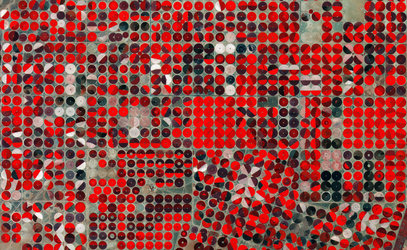Accept all cookies Accept only essential cookies See our Cookie Notice

About ESA
The European Space Agency (ESA) is Europe’s gateway to space. Its mission is to shape the development of Europe’s space capability and ensure that investment in space continues to deliver benefits to the citizens of Europe and the world.
Highlights
ESA - United space in Europe
This is ESA ESA facts Member States & Cooperating States Funding Director General Top management For Member State Delegations European vision European Space Policy ESA & EU Space Councils Responsibility & Sustainability Annual Report Calendar of meetings Corporate newsEstablishments & sites
ESA Headquarters ESA ESTEC ESA ESOC ESA ESRIN ESA EAC ESA ESAC Europe's Spaceport ESA ESEC ESA ECSAT Brussels Office Washington OfficeWorking with ESA
Business with ESA ESA Commercialisation Gateway Law at ESA Careers Cyber resilience at ESA IT at ESA Newsroom Partnerships Merchandising Licence Education Open Space Innovation Platform Integrity and Reporting Administrative Tribunal Health and SafetyMore about ESA
History ESA Historical Archives Exhibitions Publications Art & Culture ESA Merchandise Kids Diversity ESA Brand Centre ESA ChampionsSpace in Member States
Find out more about space activities in our 23 Member States, and understand how ESA works together with their national agencies, institutions and organisations.
Science & Exploration
Exploring our Solar System and unlocking the secrets of the Universe
Go to topicAstronauts
Missions
Juice Euclid Webb Solar Orbiter BepiColombo Gaia ExoMars Cheops Exoplanet missions More missionsActivities
International Space Station Orion service module Gateway Concordia Caves & Pangaea BenefitsSpace Safety
Protecting life and infrastructure on Earth and in orbit
Go to topicAsteroids
Asteroids and Planetary Defence Asteroid danger explained Flyeye telescope: asteroid detection Hera mission: asteroid deflection Near-Earth Object Coordination CentreSpace junk
About space debris Space debris by the numbers Space Environment Report In space refuelling, refurbishing and removingSafety from space
Clean Space ecodesign Zero Debris Technologies Space for Earth Supporting Sustainable DevelopmentLatest
Applications
Using space to benefit citizens and meet future challenges on Earth
Go to topicObserving the Earth
Observing the Earth Future EO Copernicus Meteorology Space for our climate Satellite missionsCommercialisation
ESA Commercialisation Gateway Open Space Innovation Platform Business Incubation ESA Space SolutionsLatest
Enabling & Support
Making space accessible and developing the technologies for the future
Go to topicBuilding missions
Space Engineering and Technology Test centre Laboratories Concurrent Design Facility Preparing for the future Shaping the Future Discovery and Preparation Advanced Concepts TeamSpace transportation
Space Transportation Ariane Vega Space Rider Future space transportation Boost! Europe's Spaceport Launches from Europe's Spaceport from 2012Latest

Egyptian crop circles
Thank you for liking
You have already liked this page, you can only like it once!
This week, ESA is focusing on its core Basic Activities, which, for Earth observation, include preserving precious data. Long-time series of datasets are needed to determine changes in our planet’s climate so it is vital that satellite data and other Earth science data are preserved for future generations and are still accessible and usable after many years.
This example includes a series of satellite images going back to 1998.
Egypt is over 95% desert, making a very small proportion of its land suitable for agriculture. As the demand for food grows, the need for agricultural development in desert areas has intensified.
This set of images shows an important land reclamation project in East Oweinat, in the Western Desert of Egypt.
Consisting of a long-time series of over 150 images captured by the US Landsat and the Copernicus Sentinel-2 missions, this comparison highlights how this agricultural project has developed between January 1998 and March 2019.
The circular shapes in the images, each approximately 800 metres wide, indicate the irrigation method used here, with water being supplied by a set of sprinklers rotating around a central pivot. Fossil water, stored underground for thousands of years, comes from the Nubian Sandstone Aquifer, the largest known fossil aquifer discovered.
The water in the East Oweinat area is low in salt content, making it ideal for cultivation purposes. Crops such as wheat, potatoes and barley are grown here, and are exported through the Sharq El Owainat airport, visible in the right side of the image.
Another interesting feature in this time series is the drifting sand dunes visible mainly in the upper left corner, which is a phenomena common in sandy deserts with constant winds.
Changes over the last 21 years are clearly visible when more fields develop, but the data also show other subtle changes within the fields themselves. This data can be used to monitor changes in land-cover over time. Long-term preservation of the satellite data from different missions ensures that changes to the land can be monitored by analysing data from the archives.
These images are also featured on the Earth from Space video programme.
-
CREDIT
USGS/contains modified Copernicus Sentinel data (2019), processed by ESA -
LICENCE
CC BY-SA 3.0 IGO or ESA Standard Licence
(content can be used under either licence)














 Germany
Germany
 Austria
Austria
 Belgium
Belgium
 Denmark
Denmark
 Spain
Spain
 Estonia
Estonia
 Finland
Finland
 France
France
 Greece
Greece
 Hungary
Hungary
 Ireland
Ireland
 Italy
Italy
 Luxembourg
Luxembourg
 Norway
Norway
 The Netherlands
The Netherlands
 Poland
Poland
 Portugal
Portugal
 Czechia
Czechia
 Romania
Romania
 United Kingdom
United Kingdom
 Slovenia
Slovenia
 Sweden
Sweden
 Switzerland
Switzerland


























